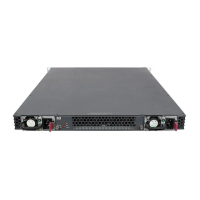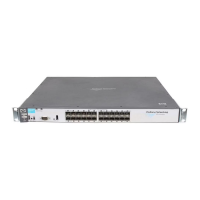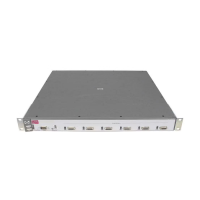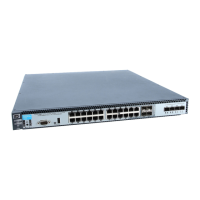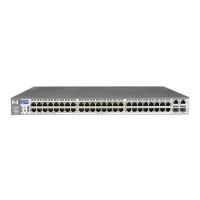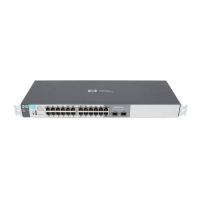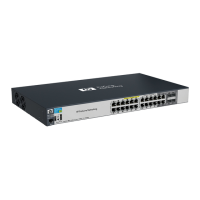RADIUS Authentication, Authorization, and Accounting
Configuring RADIUS Accounting
Configuring RADIUS Accounting
RADIUS Accounting Commands Page
[no] radius-server host < ip-address > 5-50
[acct-port < port-number >] 5-50
[key < key-string >] 5-50
[no] aaa accounting < exec | network | system | commands> 5-54
< start-stop | stop-only> radius
[no] aaa accounting update 5-54
periodic < 1 - 525600 > (in minutes)
[no] aaa accounting suppress null-username 5-54
show accounting 5-59
show accounting sessions 5-60
show radius accounting 5-60
Note This section assumes you have already:
■ Configured RADIUS authentication on the switch for one or more
access methods
■ Configured one or more RADIUS servers to support the switch
If you have not already done so, refer to “General RADIUS Setup Procedure”
on page 5-7 before continuing here.
RADIUS accounting collects data about user activity and system events and
sends it to a RADIUS server when specified events occur on the switch, such
as a logoff or a reboot. The switches covered in this guide support four types
of accounting services:
■ Network accounting: Provides records containing the information
listed below on clients directly connected to the switch and operating
under Port-Based Access Control (802.1X):
• Acct-Authentic • Acct-Session-Id • MS-RAS-Vendor
• Acct-Delay-Time • Acct-Session-Time • NAS-Identifier
• Acct-Input-Octets • Acct-Status-Type • NAS-IP-Address
• Acct-Input-Packets • Acct-Terminate-Cause • NAS-Port
• Acct-Output-Octets • Called-Station-Id • Service-Type
• Acct-Output-Packets • HP-acct-terminate- • Username
cause
5-47
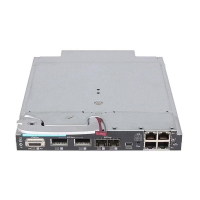
